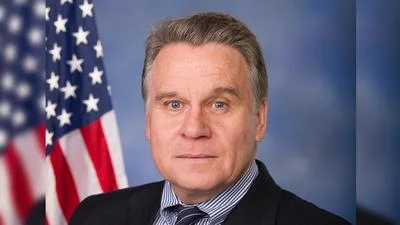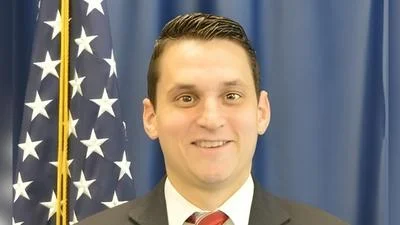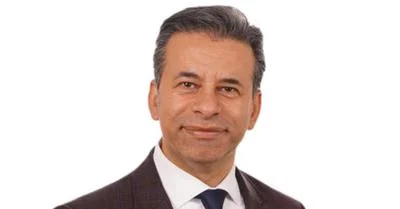The Congressional Record is a unique source of public documentation. It started in 1873, documenting nearly all the major and minor policies being discussed and debated.
“NATIONAL LABORATORIES PARTNERSHIP IMPROVEMENT ACT OF 1999” mentioning the U.S. Dept. of Energy was published in the Senate section on pages S13031-S13033 on Oct. 21, 1999.
The publication is reproduced in full below:
NATIONAL LABORATORIES PARTNERSHIP IMPROVEMENT ACT OF 1999
On October 20, 1999, Mr. Bingaman, for himself and Mrs. Murray, introduced S. 1756. The text of the bill follows:
S. 1756
Be it enacted by the Senate and House of Representatives of the United States of America in Congress assembled.
SECTION 1. SHORT TITLE.
This Act may be cited as the ``National Laboratories Partnership Improvement Act of 1999''.
SEC. 2. FINDINGS.
The Congress finds that--
(1) The National Laboratories play a crucial role in the Department of Energy's ability to achieve its missions in national security, science, energy, and environment.
(2) The National Laboratories must be on the leading edge of advances in science and technology to help the Department to achieve its missions.
(3) The private sector is now performing a much larger share of the nation's research and development activities, and is on the leading edge of many technologies that could be adapted to meet departmental missions.
(4) To be able to help the Department to achieve its missions in the most cost effective manner, the National Laboratories must take advantage, to the greatest extent practicable, of the scientific and technological expertise that exists in the private sector, as well as at leading universities, through joint research and development projects, personnel exchanges, and other arrangements.
(5) The Department needs to strengthen the regional technology infrastructure of firms, research and academic institutions, non-profit and governmental organizations, and work force around its National Laboratories to maintain the long-term vitality of the laboratories and ensure their continued access to the widest range of high quality research, technology and personnel.
SEC. 3. DEFINITIONS.
For purposes of this Act, except for sections 8 and 9--
(1) the term ``Department'' means the Department of Energy;
(2) the term ``departmental mission'' means any of the functions vested in the Secretary of Energy by the Department of Energy Organization Act (42 U.S.C. 7101 et seq.) or other law;
(3) the term ``institution of higher education'' has the meaning given such term in section 1201(a) of the Higher Education Act of 1965 (20 U.S.C. 1141(a));
(4) the term ``multiprogram National Laboratory'' means any of the following institutions owned by the Department of Energy--
(A) Argonne National Laboratory;
(B) Brookhaven National Laboratory;
(C) Idaho National Engineering and Environmental Laboratory;
(D) Lawrence Berkeley National Laboratory;
(E) Lawrence Livermore National Laboratory;
(F) Los Alamos National Laboratory;
(G) Oak Ridge National Laboratory;
(H) Pacific Northwest National Laboratory.
(I) Sandia National Laboratory;
(5) the term ``National Laboratory or facility'' means any of the multiprogram National Laboratories or any of the following institutions owned by the Department of Energy--
(A) Ames Laboratory
(B) East Tennessee Technology Park;
(C) Environmental Measurement Laboratory;
(D) Federal Energy Technology Center;
(E) Fermi National Accelerator Laboratory;
(F) National Renewable Energy Laboratory;
(G) Nevada Test Site;
(H) Princeton Plasma Physics Laboratory;
(I) Savannah River Technology Center;
(J) Stanford Linear Accelerator Center;
(K) Thomas Jefferson National Accelerator Facility;
(L) Waste Isolation Pilot Plant; or
(M) other similar organization of the Department designated by the Secretary that engages in technology transfer activities;
(6) the term ``nonprofit institution'' has the meaning given such term in section 4 of the Stevenson-Wydler Technology Innovation Act of 1980 (15 U.S.C. 3703(5));
(7) the term ``Secretary'' means the Secretary of Energy;
(8) the term ``small business concern'' has the meaning given such term in section 3 of the Small Business Act (15 U.S.C. 632);
(9) the term ``technology-related business concern'' means a for-profit corporation, company, association, firm, partnership, or small business concern that--
(A) conducts scientific or engineering research,
(B) develops new technologies,
(C) manufactures products based on new technologies, or
(D) performs technological services; and
(10) the term ``technology cluster'' means a geographic concentration of--
(A) technology-related business concerns;
(B) institutions of higher education; or
(C) other nonprofit institutions
that reinforce each other's performance though formal or informal relationships.
SEC. 4. REGIONAL TECHNOLOGY INFRASTRUCTURE PROGRAM.
(a) Establishment.--The Secretary shall establish a Regional Technology Infrastructure Program in accordance with this section.
(b) Purpose.--The purpose of the program shall be to improve the ability of National Laboratories or facilities to support department missions by--
(1) stimulating the development of technology clusters in the vinicity of National Laboratories or facilities;
(2) improving the ability of National Laboratories or facilities to leverage commercial research, technology, products, processes, and services; and
(3) encouraging the exchange of scientific and technological expertise between National Laboratories or facilities and--
(A) institutions of higher education,
(B) technology-related business concerns,
(C) nonprofit institutions, and
(D) agencies of state, tribal, or local governments--
that are located in the vicinity of a National Laboratory or facility.
(c) Program Phases.--The Secretary shall conduct the Regional Technology Infrastructure Program in two phases as follows:
(1) Pilot phase.--No later than six months after the date of enactment of this Act, the Secretary shall provide
$1,000,000 to each of the multiprogram National Laboratories to conduct Regional Technology Infrastructure Program pilots.
(2) Full implementation.--Not later than eighteen months after the date of enactment of this act, the Secretary shall expand or alter the Regional Technology Infrastructure Program to include whichever National Laboratories or facilities the Secretary determines to be appropriate based upon the experience of the program to date and the extent to which the pilot projects under paragraph (1) met the requirements of subsections (e) and (f).
(d) Projects.--The Secretary shall authorize the director of each National Laboratory or facility designated under subsection (c) to implement the Regional Technology Infrastructure Program at such National Laboratory or facility through projects that meet the requirements of subsections (e) and (f).
(e) Program Requirements.--Each project funded under this program shall meet the following requirements:
(1) Minimum participants.--Each project shall at a minimum include--
(A) a National Laboratory or facility;
(B) a business located within the vicinity of the participating National Laboratory or facility; and
(C) one or more of the following entities that is located within the vicinity of the participating National Laboratory or facility--
(i) an institution of higher education,
(ii) a nonprofit institution,
(iii) an agency of a state, local, or tribal government, or
(iv) an additional business.
(2) Cost Sharing.--
(A) Minimum amount.--Not less than 50 percent of the costs of each project funded under this section shall be provided from non-Federal sources.
(B) Qualified funding and resources.--
(i) The calculation of costs paid by the non-federal sources to a project shall include cash, personnel, services, equipment, and other resources expended on the project.
(ii) Independent research and development expenses of government contractors that qualify for reimbursement under section 31-205-18(e) of the Federal Acquisition Regulations issued pursuant to section 25(c)(1) of the Office of Federal Procurement Policy Act (41 U.S.C. 421(c)(1)) may be credited towards costs paid by non-federal sources to a project, if the expenses meet the other requirements of this section.
(iii) No funds or other resources expended either before the start of a project under this program or outside the project's scope of work shall be credited toward the costs paid by the non-federal sources to the project.
(3) Competitive selection.--All projects where a party other than the Department or a National Laboratory or facility receives funding under this program shall be competitively selected using procedures determined to be appropriate by the Secretary.
(4) Accounting standards.--Any participants receiving funding under this program, other than a National Laboratory or facility, may use generally accepted accounting principles for maintaining accounts, books, and records relating to the project.
(5) Limitations.--No federal funds shall be made available under this program for--
(A) construction; or
(B) any project for more than five years.
(f) Criteria.--
(1) Mandatory criteria.--The Secretary shall not authorize the provision of federal funds for a project under this section unless there is a determination by the Director of the National Laboratory or facility managing the project that the project is likely--
(A) to succeed, based on its technical merit, team members, management approach, resources, and project plan; and
(B) to improve the participating National Laboratory or facility's ability to achieve technical success in meeting departmental missions, promote the commercial development of technological innovations made at such Laboratory or facility, and use commercial innovations to achieve its missions.
(2) Additional criteria.--The Secretary shall also require the consideration of the following factors by the Director of the National Laboratory or facility managing projects under this section in providing federal funds to projects under this section--
(A) the potential of the project to promote the development of a commercially sustainable technology cluster, one that will derive most of the demand for its products or services from the private sector, in the vicinity of the participating National Laboratory or facility;
(B) the commitment shown by non-federal organizations to the project, based primarily on the nature and amount of the financial and other resources they will risk on the project;
(C) the extent to which the project involves a wide variety and number of institutions of higher education, nonprofit institutions, and technology-related business concerns located in the vicinity of the participating National Laboratory or facility that will make substantive contributions to achieving the goals of the project;
(D) the extent of participation in the project by agencies of state, tribal, or local governments that will make substantive contributions to achieving the goals of the project;
(E) the extent to which the project focuses on promoting the development of technology-related business concerns that are small business concerns located in the vicinity of the National Laboratory or facility or involves such small business concerns substantively in the project.
(3) Savings clause.--Nothing in this subsection shall limit the Secretary from requiring the consideration of other factors, as appropriate, in determining whether to fund projects under this section.
SEC. 5. SMALL BUSINESS ADVOCACY AND ASSISTANCE.
(a) Advocacy Function.--The Secretary shall direct the Director of each multiprogram National Laboratory, and may direct the Director of each other National Laboratory or facility the Secretary determines to be appropriate, to establish a small business advocacy function that is organizationally independent of the procurement function at the National Laboratory or facility. The mission of the small business advocacy function shall be to increase the participation of small business concerns, particularly those small business concerns located near the laboratory and small business concerns that are owned by women or minorities, in procurements and collaborative research conducted by the National Laboratory or facility. The person or office vested with the small business advocacy function shall--
(1) report to the Director of the National Laboratory or facility on the actual participation of small business concerns in procurements and collaborative research along with recommendations, if appropriate, on how to improve participation;
(2) make available to small business concerns training, mentoring, and clear, up-to-date information on how to participate in the procurements and collaborative research, including how to submit effective proposals;
(3) increase the awareness inside the National Laboratory or facility of the capabilities and opportunities presented by small business concerns; and
(4) establish guidelines for the program under subsection
(b) and report on the effectiveness of such program to the Director of the National Laboratory or facility.
(b) Establishment of Small Business Assistance Program.--The Secretary shall direct the Director of each multiprogram National Laboratory, and may direct the Director of each other National Laboratory or facility the Secretary determines to be appropriate, to establish a program to provide small business concerns--
(1) assistance directed at making them more effective and efficient subcontractors or suppliers to the National Laboratory or facility; or
(2) general technical assistance to improve the small business concern's products or services.
(c) Use of Funds.--None of the funds expended on a program under subsection (b) may be used for direct grants to the small business concerns.
SEC. 6. TECHNOLOGY PARTNERSHIPS OMBUDSMAN.
(a) Appointment of Ombudsman.--The Secretary shall direct the Director of each multiprogram National Laboratory, and may direct the Director of each other National Laboratory or facility the Secretary determines to be appropriate, to appoint a technology partnership ombudsman to hear and help resolve complaints from outside organizations regarding each laboratory's policies and actions with respect to technology partnerships (including cooperative research and development agreements), patents, and technology licensing. Each ombudsman shall--
(1) be a senior official of the National Laboratory or facility who is not involved in day-to-day technology partnerships, patents, or technology licensing; and
(2) report to the Director of the National Laboratory or facility.
(b) Duties.--Each ombudsman shall--
(1) serve as the focal point for assisting the public and industry in resolving complaints and disputes with the laboratory regarding technology partnerships, patents, and technology licensing;
(2) promote the use of collaborative alternative dispute resolution techniques such as mediation to facilitate the speedy and low-cost resolution of complaints and disputes, when appropriate; and
(3) report, through the Director of the National Laboratory or facility, to the Department annually on the number and nature of complaints and disputes raised, along with the ombudsman's assessment of their resolution, consistent with the protection of confidential and sensitive information.
SEC. 7. MOBILITY OF TECHNICAL PERSONNEL.
(a) General Policy.--Not later than two years after or the enactment of this Act, the Secretary shall ensure that each contractor operating a National Laboratory or facility has policies and procedures, including an employee benefits program, that do not create disincentives to the transfer of scientific and technical personnel among the contractor-operated National Laboratories or facilities.
(b) Extension.--The Secretary may delay implementation of the policy in subsection (a) if the Secretary--
(1) determines that the implementation of the policy within two years would be unnecessarily expensive or disruptive to the operations of the contractor-operated National Laboratories or facilities; and
(2) recommends to Congress alternative measures to increase the mobility of technical personnel among the contractor operated National Laboratories or facilities.
(c) Study of Wider Mobility.--Not later than two years after the enactment of this act, the Secretary shall recommend to Congress legislation to reduce any undue disincentives to scientific and technical personnel employed by a contractor-operated National Laboratory or facility taking a job with an institution of higher education, nonprofit institution, or technology-related business concern that is located in the vicinity of the National Laboratory or facility.
SEC. 8. OTHER TRANSACTIONS AUTHORITY.
Section 646 of the Department of Energy Organization Act
(42 U.S.C.. 7256) is amended by adding at the end the following new subsection:
``(g)(1) In addition to other authorities granted to the Secretary to enter into procurement contracts, leases, cooperative agreements, grants, and other similar arrangements, the Secretary may enter into other transactions with public agencies, private organizations, or persons on such terms as the Secretary may deem appropriate in furtherance of functions now or hereafter vested in the Secretary, including research, development, or demonstration projects. Such other transactions shall not be subject to the provisions of section 9 of the Federal Nonnuclear Energy Research and Development Act of 1974 (42 U.S.C. 5908).
``(2)(A) The Secretary shall not disclose any trade secret or commercial or financial information submitted by a non-federal entity under paragraph (1) that is privileged and confidential.
``(B) The Secretary shall not disclose, for five years after the date the information is received, any other information submitted by a non-federal entity under paragraph
(1), including any proposal, proposal abstract, document support a proposal, business plan, or technical information that is privileged and confidential.
``(C) The Secretary may protect from disclosure, for up to five years, any information developed pursuant to a transaction under paragraph (1) that would be protected from disclosure under section 552(b)(4) of title 5, United States Code, if obtained from a person other than a federal agency.''.
SEC. 9. AMENDMENTS TO THE STEVENSON-WYDLER ACT.
(a) Strategic Plans.--Section 12(a) of the Stevenson-Wydler Technology Innovation Act of 1980 (15 U.S.C. 3710a(a)) is amended by inserting after ``joint work statement'' the following: ``or, if permitted by the agency, in an agency-approved annual strategic plan.''.
(b) Federal Waivers.--Subsection 12(b) of the Stevenson-Wydler Technology Innovation Act of 1980 (15 U.S.C. 3710a(b)) is amended by adding at the end the following:
``(6) The director of a government-operated laboratory (in the case of a government operated laboratory) or a designated official of the agency (in the case of a contractor-operated laboratory) may waive any license retained by the Government under paragraphs (1)(A), 2, or 3(D) in whole or in part and according to negotiated terms and conditions if the director or designated official, as appropriate, finds that the requirement for the license would substantially inhibit the commercialization of an invention that would otherwise serve an important federal mission.''.
(c) Time Required for Approval.--Section 12(c)(5) of the Stevenson-Wydler Technology Innovation Act of 1980 (15 U.S.C. 3710a(c)(5)) is amended--
(1) by striking subparagraph (C);
(2) by redesignating subparagraph (D) as subparagraph (C);
(3) by striking ``with a small business firm'' and inserting ``if'' after ``statement'' in subparagraph (C)(i)
(as redesignated); and
(4) by adding after subparagraph (C)(iii) (as redesignated) the following:
``(iv) Any agency that has contracted with a non-Federal entity to operate a laboratory may develop and provide to such laboratory one or more model cooperative research and development agreements, for the purposes of standardizing practices and procedures, resolving common legal issues, and enabling review of cooperative research and development agreements to be carried out in a routine and prompt manner.
``(v) A federal agency may waive the requirements of clause
(i) or (ii) under such circumstances as the agency deems appropriate. However, the agency may not take longer than 30 days to review and approve, request modifications to, or disapprove any proposed agreement or joint work statement that it elects to receive.''.
____________________








